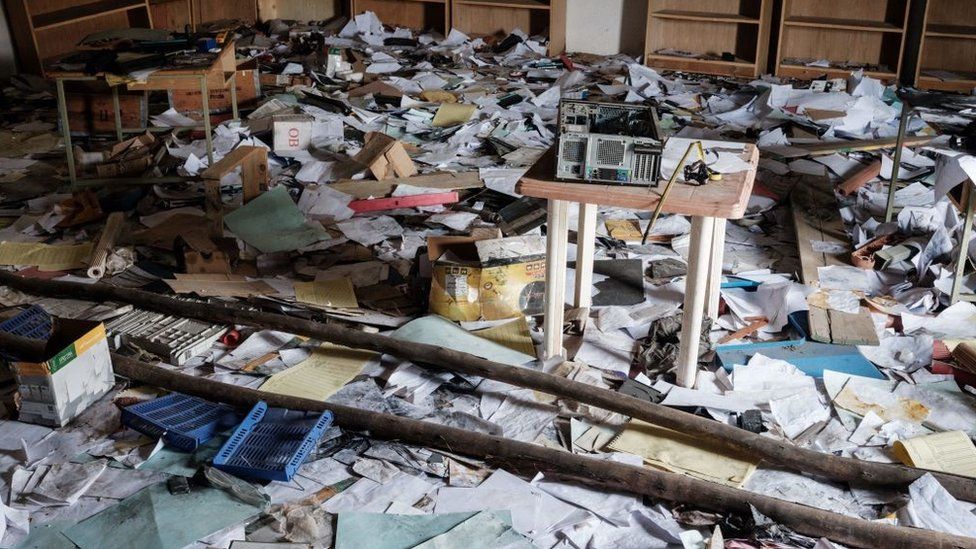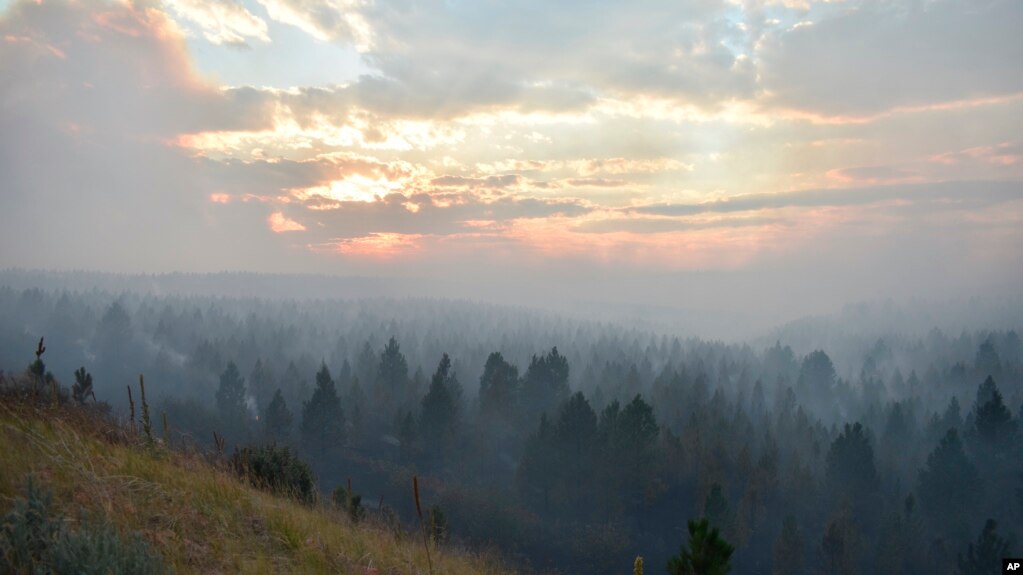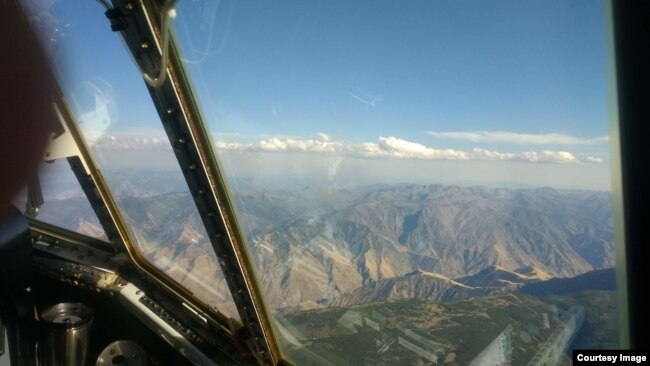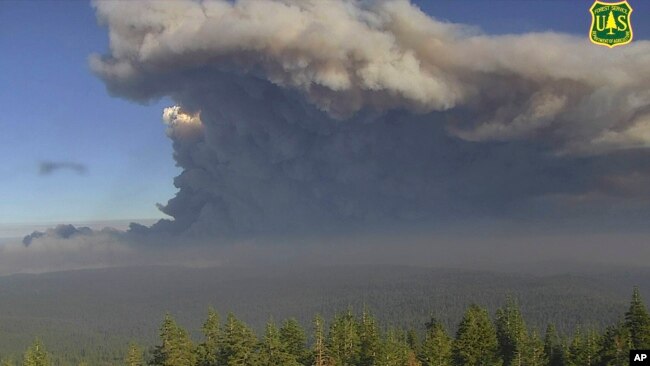Nikolai Bukharin 1915
Toward a Theory of the Imperialist State
THE IMPERIALIST STATE AND FINANCE CAPITALISM
1) Reinforcing the role of state power. 2) The state and the production of products (the domain lands, forestry, state factories, state monopolies, “mixed enterprises,” state control and mobilization of industry). 3) The state and the process of circulation (the state and the means of circulation: railways, telegraph, telephone, underwater cables; commercial monopolies, state banks and banking concerns; the organization of credit; state loans; state control in the sphere of distribution, etc.). 4) Foreign economic policy and state power. 5) The centralization process within a state-capitalist trust. 6) Militarism and militarization of the economy; the so-called war socialism.
Even the most superficial glance at socio-economic life demonstrates the colossal growth in the economic significance of the state. In particular, this growth can be seen in the expansion of the state budget. The complicated apparatus of a modern state organization demands monstrous expenditures, which increase with shocking rapidity. Here are the data:
Germany
(millions of marks) | France
(millions of francs) | Great Britain
(pounds) | The United States
(dollars) | Italy
(millions of lira) | Russia [28] |
| 1891-95 – 1,553.0 | 1893 – 3,359.7 | 1900 – 143,687,068 | 1900 – 487,713,792 | 1898-99 – 812 |
| 1901-05 – 2,253.1 | 1907 – 3,882.323 | 1910 – 157,944,611 | 1910 – 659,705,391 | 1906-07 – 1,945.9 |
| 1907 – 2,809.8 | 1908 – 4,020.5 | 1911 – 171,995,667 | 1911 – 654,137,998 | 1909-10 – 2,602.1 |
| 1908 – 2,784.8 [21] | 1909 – 4,186.0 | 1912 – 178,545,100 | 1912 – 654,553,963 | 1910-11 – 2,833.1 |
| 1911 – 2,897.4 | 1910 – 4,321.9 | 1913 – 188,624,930 | 1913 – 682,770,705 | 1911-12 – 2,949.0 |
| 1912 – 2,893.3 | 1911 – 4,547.9 | 1914 – 197,492,969[25] | 1914 – 700,254,489[26] | 1912-13 – 3,252.027 |
| 1913 – 3,520.9 [22] | 1912 – 4,742.7[24] |
Since the 1890s, therefore, Germany has increased its budgetary expenditures by 126%; France, by 41%. In Great Britain and the United States the increase since 1900 has been 37% (England) and 44% (the USA). The budget of Italy has grown since the end of the ‘90s by 67%. And then there is Russia.
Just how large the volume of state expenditures is relative to those of the population can be seen from the following table (compiled on the basis of income-tax statistics for Prussia):[29]
| | Millions of marks | Percent |
| State expenditures | 2,323 | 13 |
| Community expenditures (more than 10,000 inhabitants) | 918 | 5 |
| Community expenditures for productive purposes | 1,856 | 11 |
| Personal expenditures by the bourgeoisie | 2,784 | 16 |
| Expenditures by the popular masses | 9,616 | 55 |
The state and the largest municipalities accounted for approximately 20%, or one-fifth, of all expenditures.
As one aspect of imperialist policy, which in turn results from the specific structure of finance capitalism, militarism plays an enormous role in such budgetary increases. But we are not speaking simply of militarism in the narrow sense of the word. A further cause is the growing interference of the power of the state in every realm of social life, beginning with production and ending with the highest forms of ideological creativity. The pre-imperialist period was that of liberalism, which was the political expression of industrial capitalism and was characterized by non-intervention on the part of state power. The formula of laissez-faire was a symbol of faith within the leading circles of the bourgeoisie, who left everything to the “free play of economic forces.” Our own time, by contrast, is characterized by exactly the opposite tendency, the logical limit of which is state capitalism, or the inclusion of absolutely everything within the sphere of state regulation.
In order to ascertain the most general sources of this statification we must keep in mind the tendencies of finance-capitalist development. The organizational process, which embraces more and mere branches of the “national economy” through the creation of combined enterprises and through the organizational role of the banks, has led to the conversion of each developed “national system” of capitalism into a “state-capitalist trust.”[30]
On the other hand, the process of development of the productive forces of the world economy drives these “national” systems into the most acute conflicts in their competitive struggle for the world market. These two basic facts of contemporary capitalist reality provide us with the key to understanding the “state” tendencies of contemporary finance capitalism. Why was the bourgeoisie really so individualistic in the past? Principally because the basic category of economic life was the private-economic unit, which confronts all the others as a competitor. The interrelation of people, or the internal structure of the bourgeoisie as a class, was analogous to this interrelation among enterprises. As a class the bourgeoisie came out against the proletariat. But internally, within the limits of the class itself, each member stood opposed to the other as a competitor: Homo homini lupus est. Each hoped to unseat his opponent by relying upon his own forces, the interplay between them being positive for the “whole.” But it was not only separate enterprises and individual people who emerged as the bearers of individualism. The division of the ruling classes into different groups also played an analogous role: above all the division into a landed and an industrial bourgeoisie, followed by lesser divisions between the representatives of raw material production and manufacturers, commercial and usurer capital, etc. The epoch of finance capital puts an end to this state of affairs. Above all else, the individual private enterprise disappears as the cell of the capitalist organism and the basis of capitalist individualism. Moreover, the contradiction between different subgroups of the ruling classes also largely disappears. By collaborating with one another, almost every category of the bourgeoisie is transformed into the recipients of dividends, the category of interest becoming the general form of expression for all so-called “nonlabor incomes.” The holy of holies for every bourgeois (and landlord) becomes the bank to which he and his kind are tied by a thousand threads.
Thus, a system of collective capitalism is created, which to a certain extent is opposed to the entire structure of capitalism in its earlier forms. The separate capitalist disappears: he becomes a Verbandskapitalist,[31] a member of an organization; he no longer competes, but instead cooperates with his “compatriots”; for the center of gravity in the competitive struggle is carried over into the world market, whereas within the country competition dies out. Such a structure of the ruling classes is accompanied by a corresponding change in the “state machine”: the state power becomes the supreme organization of the finance-capitalist bourgeoisie, who constitute a homogeneous group. The financial oligarchy rules the trusts; the financial oligarchy rules the country. This is simply another organization of one and the same clique. It is understandable that in these circumstances the earlier opposition to the idea of “state socialism” (i.e., state capitalism) should vanish. By transferring management of the state-capitalist trust to a formally independent state (we have in mind economic regulation) in exchange for a guaranteed income, finance capital changes nothing essential. But it can expect certain advantages. These advantages are tied directly to the imperialist policy. We have already noticed that external competition begins to play an enormous role. The instruments of such competition are not only dumping and purely economic pressure but also the pressure of armed force – of war, in the final analysis. Hence the question of military might. Contemporary warfare differs completely from the wars of previous times: from an economic viewpoint the issue is no longer just where to acquire the money, but one of financial and industrial mobilization – a question of converting a “peacetime economy” into a “war economy” (Friedenswirtschaft und Kriegswirtschaft). “In economic terms war used to be a problem of state finances. But now the state is omnipotent. Thus, its operation does not appear outwardly in the form of an enterprise (Unternehmung), and it no longer faces a financial-economic problem, or a problem of money; instead the natural substance of the entire national economy is mobilized for war.”[32] The question of mobilizing the entire “natural-economic substance” is one of an organization directly subordinated to the control of the state power. The more organized the state-capitalist trust, the greater the intervention of state power, the larger the share of output by the state’s own enterprises, and the more powerful the role of state banks, which regulate the circulation of money and credit, the more battle-worthy is this gigantic unit and the greater are the profits expected by the fortunate citizens of the glorious fatherland. “Per Sozialismus gehort zu den Mitteln der ‘Kriegsfuhrung’” (“Socialism in an instrument for the conduct of war”), exclaims the socialist renegade Edmund Fisher, taking the extreme form of state intervention to represent socialism.[33]
Such are the most general causes of the “change of attitude” among the leading representatives of bourgeois “public opinion.” The remaining opposition to “statification” comes from the ranks of commercial capital, a branch of activity whose importance is declining and whose functions become redundant given direct control by the state.
The war has caused state-capitalist relations of production to mature rapidly. War is accompanied not only by tremendous destruction of productive forces: in addition, it provides an extraordinary reinforcement and intensification of capitalism’s immanent developmental tendencies. There is no doubt that the war has caused an entire “industrial revolution” and has revolutionized (in this conditional sense) the economic foundation, destroying with colossal speed those capitalist relations that had already become outdated. Of course, many of these changes were due to the specific needs and tasks of the war, and will die out as soon as the protracted, superhuman massacre comes to an end. But many will also remain, for in the form of state-capitalist trusts and under threat of its own destruction, capitalism must inevitably approach an epoch of one war after another.[34]
Let us begin with changes in the basic sphere of economic life, that of production.
From the early epoch of capitalism and continuing right through the stage of industrial capitalism certain rudimentary forms have persisted that can now be absorbed as living cells of the state economy. We have in mind the domain lands, the forest industry, and state factories. Compared with the sphere lying beyond the possessions of the state, these forms are numerically insignificant. But the state forest industry is of considerable importance. Take the German data as an illustration. In 1900 timber was distributed among the different categories of ownership as follows:
| Crown timber | State timber | Timber owned
jointly by the
state and others | Municipalities |
| 257,302 | 4,430,090 | 29,793 | 2,258,090 |
| Institutions | Associations | Private | Total [35] |
| 211,015 | 306,214 | 6,503,365 | 13,995,869 |
The mining industry should also be noted, for here, too, the state has retained a certain position.
Much more important, however, are the ever-multiplying attempts to establish state monopolies in the realm of production. There can be no doubt that this type of state intervention has the most “brilliant” future. To the general considerations we have already mentioned another must be added, having acquired particular significance during the war. We have in mind the need for an enormous increase in state revenues. The costs of the war are so enormous (including payment of state debts, interest payments on state loans, assistance to the wounded and orphans, etc., reconstruction of the depleted military apparatus on an expanded scale, etc.) that to cover them over a period of several years will require, and is already requiring, a total reconstruction of the state budget. At a minimum the income of the warring states must be increased twofold, possibly more. The immediate problem of state finances therefore assumes colossal and unprecedented dimensions. As a rule, state revenues can be classified according to the following categories: revenues from the state’s own enterprises (e.g., the forest industry, mining, state factories, railways, etc.), direct taxes, indirect taxes (including tariffs), and state monopolies. Revenues from the state’s own enterprises are relatively small; direct taxes are objectionable to the bourgeoisie; and an increase in indirect taxes (and tariffs), which all governments practice con amore, meets with the stubborn resistance of the proletariat.[36] Nothing remains but recourse to the introduction of state monopolies over the production of a number of products: the tobacco monopoly, monopoly in the production of cigars and cigarettes, monopolies in alcoholic beverages, kerosene, matches, electrical energy, coal and iron, potassium, gas for lighting, certain metals, etc. These are the branches of production in which monopolization encounters the least difficulties and has already occurred in several states.
Monopolization is also to be expected in war industry, that is, the industries working for the army and the navy (building battleships, cannon, etc.). Unproductive from the viewpoint of social development, this branch of production will grow in importance. Far from the “ultra-imperialist” idyll of Kautsky, we face a period of more acute competition on the part of state-capitalist trusts.[37] The transitional form between the “private capitalist enterprise” (or trust) and the pure type of state enterprise is the so-called “mixed enterprise” (“gemischte Betriebe”). Recently this form has begun to appear with growing frequency, and there is every likelihood that it will spread rapidly. Essentially the state cooperates here with a private capitalist enterprise or, more often, with a capitalist organization (a trust, syndicate, cartel, etc.). The merger is achieved through “share holding” (or “participation”): the state purchases a portion of the shares of the enterprise in question, the balance being held by the usual trust. Thus, the state and an entrepreneurial economic organization become co-owners of one and the same productive unit. Over the course of time this intermediate type will understandably give way to the pure form of state enterprise. The mechanism for this process is very simple: either the state becomes the owner of a growing portion of the shares, or else the shareholders are converted into mere recipients of a certain fixed income, being prevented from interfering directly in the production process, which is left to the control of the enlightened and appropriately trained imperialist bureaucracy.[38]
These are the basic and most established forms of state intervention in the sphere of production. There is a multiplicity of other measures that, to a greater or lesser degree, curtail the “free disposal” of private property. Although these measures by no means cause a loss in all cases for the aforesaid property owners, they do place production under control of the all-seeing eyes of the state. In the case of every belligerent country, those enterprises working for so-called “national defense” have been subjected to such control. In Germany, where the English blockade has increased the tendency toward regulation of the economy to an extreme , this control has been extended to several other production branches.[39] If, for example, a special ‘’Reichsverteilungstelle’’ not only distributes the finished product – sugar, shall we say – but also determines precisely how much sugar must be produced, by what date, and where to deliver it, then, under these conditions, the arbitrariness of the private entrepreneur or syndicate gives way to “state discretion.” We have, in consequence, a limitation on production and sales. Occasionally the state goes further and joins the different production groups together in a single complex for the sake of greater production planning (as was the case, for instance, in the German coal industry).[40] Finally, there is an infinite number of rules that regulate the production process itself (requiring a certain method of production, the use of specified raw materials, etc.). “All of these measures” – to quote Professor Hatchek – “convert the producer and the seller into social functionaries” (the worthy professor neglects only to mention the indecent “compensation” these syndicated “social functionaries” receive).
In these ways state power absorbs virtually every branch of production. Not only does it preserve the general conditions of the exploitative process but, in addition, the state increasingly becomes a direct exploiter, organizing and directing production as a collective, joint capitalist.
A similar process can be observed in the sphere of circulation.
Let us begin by considering the technical-material framework of the circulation process: the railways, telegraph, telephone, underwater cables, and the postal organization as a whole.
Here “statification” occurred earlier than in other areas. The reasons for statification of the railways were typical. Beside the economic reasons (the enormity of the capital to be advanced, the low rate of profit at the outset, etc.), both fiscal and military-strategic motives were operative. Although much later than other countries, England brought the railways under the Treasury, owing to the influence of the “great war.” As with protectionism, the creation of a standing army, the curtailment of individual freedoms, and so forth, the transition was also made to a state railway industry. The relative “weight” of state railways as a percentage of total track length is as follows: Belgium, 90.8%; Germany, 92.5%; Denmark, 55.6%; Italy, 77.8%; the Netherlands, 56.3%; Norway, 84.2%; Austria, 80.4%; European Russia, 65.5%; Switzerland, 71.9%; etc. France, Portugal, and Sweden have railways of the “mixed” type. As for the telegraph, only in America does a private telegraph play a major role, state telegraphs being the norm elsewhere. The cable network is mainly in the hands of private companies, but the state’s share is growing. There can be no doubt that the influence of the war is very forceful in this respect: in the name of “national defense,” and so forth, an energetic policy of statification is being implemented in all of these branches.
The skeleton of the circulatory process is therefore largely in the hands of the state. But the very process of circulation is itself passing more and more into state hands. Consider, for example, state trade monopolies. Generally speaking, these monopolies were introduced for the same reasons as those in the sphere of production: from a negative viewpoint, the growing “collectivist” character of capitalist relations; more positively, the financial and strategic considerations that compel the bourgeoisie to centralize economic relations at the level of the “fatherland.” In cases in which a production monopoly is difficult to establish, for one reason or another, the state assumes the exclusive right to sell the particular product and to set its own prices.
There is no doubt that trade monopolies represent a step toward further intrusion of state control into the realm of production. The only difference is that in this case intervention begins, so to speak, at the other end.
The joint-stock form of enterprise adds the possibility in this sphere as well of creating “mixed” enterprises, whose shareholders are public-law institutions (the state, municipalities), on the one side, and commercial-industrial organizations, on the other. In time of war a similar role is being played in Germany by the numerous “Kriegsrohstoffgesellschaften” (“war material societies”), which have complete authority (under the control of state power) to centralize all available supplies of different types of goods and to distribute them in accordance with definite regulations, established either by the state (e.g., rubber, benzine, metals, leather, etc.) or by “Reichsverteilungsstellen” (“imperial allocation offices”), which handle the allocation of commodities throughout the empire. Numerous organizations are obliged to supply commodities; others are obliged to accept them; and prices are fixed by the state. Finally, an extreme form of state intervention is the system of confiscation (consider, for instance, the activity of the German government in supplying the population with food products and the so-called “food dictatorship”). Here, too, several syndicate organizations cooperate with the organs of state and local government. As a result, the anarchic commodity market is largely replaced by organized distribution of the product, the ultimate authority again being state power.
Of course, many of these forms must also die out with the advent of normal conditions for the economic process. The dreams of certain ideologists of imperialism (dreams of so-called “Magasinierung,” or the establishment of gigantic state warehouses of different kinds of products with the simultaneous near-isolation of the state economy – in short, dreams of economic “autarky”) are absolutely Utopian.[41] But the general tendency of growing intervention by the state remains, even though its theoretical limits are impossible to establish.
If we turn now from the circulation of commodities to the circulation of money and the sphere of credit, we find the exact same process. The need for the state to regulate the entire process of monetary circulation is also made dramatically evident in time of war. Financial mobilization presupposes the colossal might of state central banks, which gather up virtually the entire gold supply of the country. The concrete constellation of monetary circulation depends primarily on the policy of the state bank, the quantity of notes it puts into circulation, etc. The same is true of credit relations. In Germany the state bank has also been supported by the “loan offices” (Darlehenskassen), which are subordinate to the bank and were specially created for the war. Besides accepting all manner of paper securities, these state institutions are also designed to grant credit, commodities[42] being accepted as security. Thus, something in the nature of a mutual guarantee, or an ever-expanding “community of interests,” arises between the state power and different circles of the bourgeoisie, as the representatives of economic life. Within the same sphere this mutual guarantee might take many different forms. The role of state loans is especially important. (The “success” of internal loans is highly dependent on one condition, namely, that capital cannot find areas for investment because the productive base has been narrowed owing to the war. Analysis of the sources of the payments makes it clear that the “popular” character of this success is pure fantasy.) If the capitalists give up their capital to the state, they also become shareholders in the whole aggregate of state enterprises, in the broad sense of the word; for the fixed rate of interest they receive represents a portion of the state’s general revenues. The more extensive the internal loan operations are, the more closely are all the branches of production tied economically to the state power. This tie originates and is accomplished in the sphere of circulation. The supreme regulator is the state bank.
It is interesting that the structure of the latter institution is not the same in all countries. In some cases there is a purely state institution; in others, an enterprise of the “mixed type.” The German Imperial Bank is one of a mixed nature. As a joint-stock society it is directed by state officials, who are appointed by the Emperor on the advice of the Bundesrat.[43] The “nature” of this bank has even given rise to several theoretical discussions on the theme of whether it is a state institution – that is, whether it is an institution of a public-law nature or a simple joint-stock company of a private-law nature.
In this connection we should also remember the so-called regulation of consumption. In fact, this sphere belongs entirely to circulation. It is a process of distributing goods, not of consuming them, for the latter lies beyond the limits of any economic investigation. We have in mind as well the numerous ration cards and other measures: cards for bread, butter, meat, etc.
In certain countries the intervention of state power has assumed enormous dimensions. In Germany it has led to regulated distribution of all food products and to “communist” mass meals (“Massenspeisungen”). This type of state intervention, however, is the least stable; and there is no doubt that it will disappear with the end of the war and overcoming Germany’s economic isolation.
It remains for us to look at the state’s foreign economic policy. Under this heading belong, first and foremost, all possible types of prohibitions and limitations on imports and exports, including the entire system of tariff policy, trade agreements, support for “national industries” abroad, premiums of all sorts, the search for concessions and profitable lending opportunities, etc., plus direct plunder, or seizing the territory of someone else’s “fatherland” for monopolistic exploitation by one’s “own” finance capital, which is the essence of an imperialist policy.
Now let us summarize. In total contrast to the state in the epoch of industrial capitalism, the imperialist state is characterized by an extraordinary increase in the complexity of its functions and by an impetuous incursion into the economic life of society. It reveals a tendency to take over the whole productive sphere and the whole sphere of commodity circulation. Intermediate types of mixed enterprises will be replaced by pure state regulation, for in this way the centralization process can advance further. All the members of the ruling classes (or, more accurately, of the ruling class, for finance capitalism gradually eliminates the different subgroups of the ruling classes, uniting them in a single finance-capitalist clique) become shareholders, or partners in a gigantic state-enterprise.[44] From being the preserver and defender of exploitation, the state is transformed into a single, centralized, exploiting organization that is confronted directly by the proletariat, the object of exploitation. In the same way as market prices are determined by the state, the workers are assigned a ration sufficient for the preservation of labor power. A hierarchically constructed bureaucracy fulfils the organizing functions in complete accord with the military authorities, whose significance and power steadily grow. The national economy is absorbed into the state, which is constructed in a military fashion and has at its disposal an enormous, disciplined army and navy. In their struggle the workers must confront all the might of this monstrous apparatus, for their every advance will be aimed directly against the state: the economic and the political struggle cease to be two categories, and the revolt against exploitation will signify a direct revolt against the state organization of the bourgeoisie.
All of these developments lie in the near future, unless a social catastrophe occurs before the pure type of economic relations we have been describing can take shape.
It is easy to qualify in socio-economic terms the mode of production whose undeveloped form is represented by the contemporary Kriegssozialismus, i.e., the militarization of almost every branch of industry. Many bourgeois theorists speak of state socialism. Professor Krahmann, for example, whom we have cited previously, writes:
The powerful influence of all the means currently employed to support the state and defend the Fatherland, means that have been adopted by the state out of military considerations, will be to move us . .. much nearer to state socialism. But this change will not occur in the way which some have dreaded and for which others have hoped. This is not a loose international, but a nationally consolidated, socialism that we are approaching. It is not a democratic communism; still less is it an aristocratic class government: it is a nationalism that reconciles classes [45]
And the revisionist E. Fisher, in addition to claiming that “Socialism is essentially nothing but the carrying over of the state idea (Staatsgedankens) into the national economy and social life in general,” tries his utmost to find socialism, referring to monopolization of the various branches of production with such strange names as “electrical socialism,” “water socialism,” and so forth.[46] These misleading phrases obscure the reality of the matter, namely, that in “war socialism” class contradictions not only persist but reach their maximum intensity. In the ideal type of imperialist state the process of exploitation is not hidden by any secondary forms: the mask of a supraclass institution that looks after everyone alike is torn away from the state. This is the basic fact, and it thoroughly demolishes the arguments of the renegades. For socialism is regulated production, regulated by society, not by the state (state socialism is about as useful as leaky boots); it is the elimination of class contradictions, not their intensification. On its own, the regulation of production is far from signifying socialism: it occurs in every familial economy, among every slave-owning natural-economic group. What we in fact expect in the near future is state capitalism. A single protest might be raised against such a designation, namely, that the logical extreme and pure type of the relations now emerging would entail the elimination of hired labor. The worker would receive rations, “aliments,” not a monetary equivalent of the value of labor power. Just as market prices are replaced by regulated distribution of the product, so the wage form would disappear and along with it hired labor as such. The worker would become a slave. And since hired labor represents one of the most characteristic features of capitalism, it is impossible to use the term capitalism to designate relations that involve the elimination of hired labor. Nevertheless, we would accept this complaint as being correct and would introduce some new designation for the type of relations now being formed only in one event – that is, if a single world economy were in existence. Insofar as this is not the case (for reasons we have discussed in Kommunist, a single world economy represents an impossible hope), and insofar as the anarchy of the world market remains, the categories of value and wages are also preserved – with the single difference that now the position of the separate enterprise has been taken by the state enterprise. The labor market will become the world market for labor, and the movement of workers from one state to another will gather momentum. Likewise, we must not think that the state will be able to establish whatever prices it dreams up, or that the law of labor value loses its significance, for it would be absurd to imagine a closed state and economic autarky. The pressure of the world market remains.
Thus, state capitalism is the completed form of a state-capitalist trust. The process of organization gradually removes the anarchy of separate components of the “national-economic” mechanism, placing the whole of economic life under the iron heel of the militaristic state.
READ ON
Toward a Theory of the Imperialist State by Nikolai Bukharin 1915 (marxists.org)













